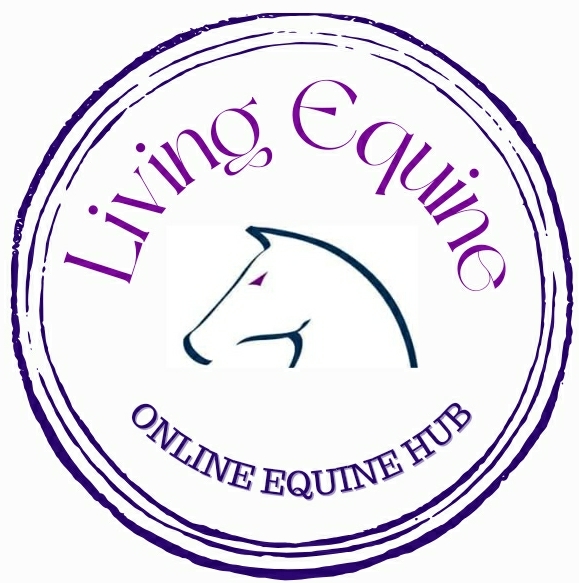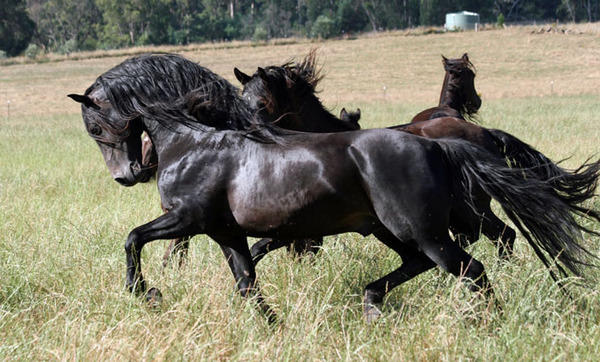The key member of any breeding program is usually the stallion. As I have pointed out with the previous blog, the stallion is not the only determining factor of producing quality offspring. Broodmares are without a doubt capable of having a massive impact in deciding the success of breeding endeavours. However most breeders tend to try to find a stallion that has a high prepotency, and therefore try to pre-determine the traits and qualities of the foal prior to it’s birth. Prepotency refers to the way that the stallion’s sperm carry with it many of the stallion’s traits (physical, mental, temperament and genealogical), and can then be identified in his offspring dominantly over the mare’s traits.
The criteria that most breeders use to select a new stallion for their breeding program are: Conformation, Temperament, Fertility, Gait & Physiological Factors and Performance Record. How the stallion is physically put together plays an important role in selecting one over another. Breeders in different disciplines will look for particular types of conformation that are specialised for their discipline. For example a Show Jumping Breeder will look for the sloping angle of the croup, and shoulders that have angulation (not upright). Whereas a Dressage Breeder will look for the shape and length of the back, and whether this can work in with a supple topline of the horse. Regardless of what discipline a stallion is being selected for, they will generally be assessed under the ‘Five Tests of Conformation’. Thirds, Square, Length of Rein, Croup to Wither Height and Shoulder to Back to Croup Length are the five tests that can be drawn on to a stallion’s photograph of him standing in the standard selection pose. If a breeder has a stallion that passes 3 or more of these tests, then they know that they have well a conformed horse at least by the ‘Five Tests of Conformation’. The only other quick test that a breeder will check prior to moving on to their other selection criteria, is whether the stallion’s legs are straight from the front and back, or whether there is any presence of deviations. Deviations can range from Pigeon Toed to Base Wide or Narrow.
Temperament; as important as conformation to many breeders. A stallion’s temperament will determine how rideable and trainable he is, what his ground manners are like, and what presence he will have where ever he goes. Not all stallions are ridden, but those that are, need the right attitude and mindset to be able to be ridden either in training or at an event. Ridden performance horse or not, every stallion needs to be trainable so that anyone handling him can do so safely, and with overall obedience (the odd mild mischief is understandable). Ground Manners are how a stallion is for anyone to be around from the ground. Does the stallion try to be dominant and pushy, or does he be compliant and gentle? Last but not least; presence! Does the stallion scream look at me to onlookers, and have that “wow factor” for the discipline/s or purpose he is needed for?
Fertility can be an obvious deal breaker for breeding stallions if it is not up to scratch. Breeders tend to assess what heritable traits does the stallion bestow to his offspring, the statistics on his sperm, and what types of cover can he provide. As mentioned before, prepotent stallions are capable of giving their offspring many of their heritable traits. Whether this be physical traits like markings, temperament qualities like extroverted presence, or even diseases that the stallion is a carrier of, these are all examples of traits that a stallion can inherit to their foals. Statistics of a stallion’s sperm are often requested by breeders to assess the viability and fertility of a particular stallion. Obviously if the sperm are infertile, or there is presence of disease the stallion is generally not used to breed from. Lastly the breeder needs to know what types of cover a stallion can provide to their mare and choose one to use. Types of cover being Live Cover, Chilled or Frozen Artificial Insemination. The type used is subjective to the Vet, Breeder and Stallion selected for breeding.
Gait & Physiological Factors just refers to how a stallion can perform each gait from walk to a gallop in line with textbook gaits, and if there are any things, physically within his body, that prevent him from functioning and performing as desired. Videos or viewings of the stallion in question are used to assess the stallion performing each gait, and then a decision can be made by the breeder as to how closely a particular stallion performs set tasks as wanted. Generally any major physiological factors can be deal breakers for breeders, however minor ones can sometimes be overlooked and managed whilst under their care and/or use.
Performance Record; does the stallion have a competition history? If so, how well did he perform? Has there been triumphs or hardships along the way? What have he and his rider done to excel from the triumphs, and overcome the hardships? All the answers to these questions for a stallion who is selected to be a performance horse and/or a breeding stallion, can help determine whether he is the right fit for a particular stables or not.
By using these 5 selection criteria to guide a breeder in selecting a stallion, it gives the breeder some confidence in knowing that the stallion that they choose, is sure to be a keeper for them for many years to come.
Feature Image courtesy of Mountain Creek Moriesians.
-Skye Pickering Dip. Horse Business Management

